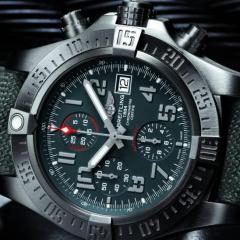-
Recently Browsing
- No registered users viewing this page.
-
Topics
-
Posts
-
Forgot to mention that only demagnetize a balance when its in the movement, otherwise the magnetic field will snatch the coils and damage them
-
By HectorLooi · Posted
Sometimes a sticky hairspring might unravel after using a demagnetizer. But if you push the coils until they touch, they will stick together again. I find that brushing the coils gently while submerged in naptha the most effective way to cure a sticky hairspring. Sometimes it requires 2 or 3 washes to cure it. I often wondered what causes a hairspring to become sticky. The 9010 in the jewels are unlikely to drip onto the hairspring. The other possibility is the 9415 on the pallets. But then that's on the other side, below the balance. Can it "splash" onto the hairspring? Looking at the stickiness and tenacity, I'm leaning towards 9415. -
I was about to ask the same question, it sounds a lot like magnetism which is a quick fix (assuming you have access to the correct tool) and ideally something you should do anyway.
-
Nice! I have lately been buying up a handful of Arnex pieces on eBay because it is often obvious even without photos that they house a fine Unitas 6498. And many of the 1970s cases and "old timey themed" dials are irredeemably ugly so they are a cheap way to pickup great movements to power custom wristwatch projects. All of the ones I've bought were in like new condition, barely used assuming they were bought as graduation or retirement gifts in the 70s or 80s.
-
By ManSkirtBrew · Posted
Walked by my local jeweler today and asked if I could dig around in his old watch case, and picked this guy up (along with a cool vintage compass and a Seiko kinetic5M62). My girlfriend's son asked if he could borrow one of my pocket watches for prom, so I thought if I can get this guy running it'd be a nice prom gift. Non-running. Felt like the balance was overbanked, but it turns out the train was jammed solid. Looks like it was just dried lubricant gluing the 3rd wheel in place, because it's clean as a whistle otherwise. Parts are in the ultrasonic right now.
-








Recommended Posts